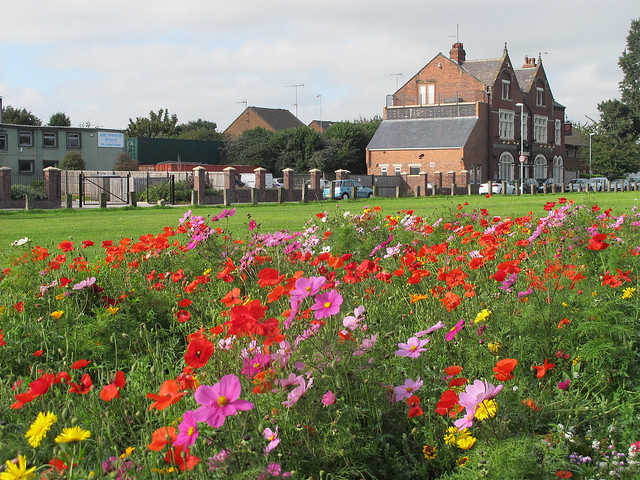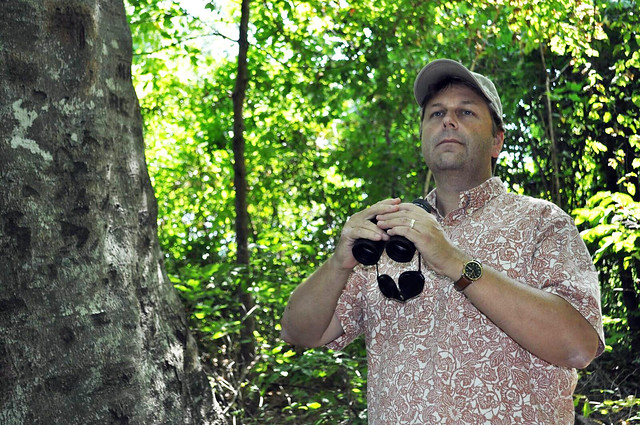Auburn professor seeks to improve biodiversity of urban green spaces
Article body
Green spaces are common throughout cities and potentially very important for biodiversity. Yet, we know surprisingly little about their ecology and value to conservation, says Auburn University Professor Christopher Lepczyk.
Lepczyk, a professor of ecology and conservation biology, and a team of international researchers address this knowledge gap in their recent study published in BioScience titled “Biodiversity in the City: Fundamental Questions for Understanding the Ecology of Urban Green Spaces for Biodiversity Conservation.”
“The majority of the world’s people live in urban areas,” Lepczyk said. “As our populations become more centralized and spread across the landscape, the development of urban green spaces have become more prevalent.”
These areas can take many different shapes and sizes, are subject to a variety of management practices and include parks, gardens and cemeteries. The unifying feature of these spaces is the presence of vegetation, whether partly or completely covered with grass, trees or shrubs.
“Green spaces are widely known to improve quality of life, property values and the well-being of people young and old, who are able to connect with and learn about nature,” Lepczyk said. “They can also serve as important habitat for wildlife and plants.”
However, he says many people view urban areas as concrete jungles, though in reality the urban areas can function to support native species, depending on the size, quality and management of the green space—features that are also vital for human health and well-being.
The researchers identified key questions to better understanding the ecology of urban green spaces to improve the quality and management of these ecosystems in support of greater biodiversity.
-
How large must an urban green space be for biodiversity conservation?
-
How are animal population sizes limited by green spaces during their life cycle?
-
How does heterogeneity within and across green spaces affect plant and animal assemblages?
-
How connected should green spaces be to support biodiversity?
-
When are green spaces more likely to act as ecological traps or population sinks?
“As important as they are, not all urban green space is equal. Species diversity can often be homogenous or degraded to the point that opportunistic nonnative invasive species become dominant,” said co-author and Rutgers Professor Myla F.J. Aronson. “A more complex management strategy is needed to assure the health of these ecosystems.
“The study illuminated that future research is needed to understand how green space size, connectedness and type influence community, population and historical species dynamics within cities.”
This research framework based in landscape and metapopulation ecology would allow for a greater understanding of the ecological function of green spaces and thus allow for planning and management of green spaces to conserve biodiversity and aid in restoration.
“Our understanding of urban ecology is far from complete, and the data at hand are often patchy, leaving stakeholders without the tools they need to successfully manage human-affected ecosystems,” said James Verdier, senior editor of BioScience, a scientific journal of the American Institute of Biological Sciences.
Lepczyk added, “Improving our knowledge about these ecosystems and the future of urban biodiversity will be crucial for successful ‘green’ management and healthy urban ecosystems.”
Related Media
More Information
Lead author:
- Christopher Lepczyk
Professor of Ecology and Conservation Biology, School of Forestry and Wildlife Sciences, Auburn University, Auburn, Alabama
Co-authors:
-
Myla F. J. Aronson
Professor of Botany and Ecology, Department of Ecology, Evolution and Natural Resources, Rutgers, the State University of New Jersey, New Brunswick, New Jersey -
Karl L. Evans
Research Fellow and Senior Lecturer in Conservation Biology, Department of Animal and Plant Sciences, University of Sheffield, Sheffield, United Kingdom -
Mark A. Goddard
Research Associate of Urban Ecology, School of Civil Engineering and Geosciences, Newcastle University, United Kingdom -
Susannah B. Lerman
Adjunct Research Professor, Department of Environmental Conservation, University of Massachusetts, Amherst, Massachusetts
Media interested in this story can contact Communications Director Preston Sparks at (334) 844-9999 or preston.sparks@auburn.edu.
The Auburn University College of Forestry, Wildlife and Environment is a flagship institution for natural resources-based degrees including natural resource management, geospatial and environmental informatics and sustainable biomaterials and packaging. The school serves as the backbone for Alabama’s $30 billion+ forest, wildlife and natural resources related enterprises. Its mission is to create next-generation professionals and leaders, to develop new knowledge and disseminate science-based solutions to our clientele to improve the social, economic and environmental well-being of citizens in Alabama and beyond.








